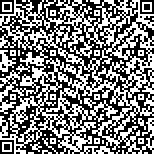本文已被:浏览 152次 下载 148次
Received:January 07, 2024 Published Online:May 20, 2024
Received:January 07, 2024 Published Online:May 20, 2024
中文摘要: 目的 分析脊柱内镜下单侧椎板间入路双侧椎管减压术改善腰椎管狭窄症(LSS)患者腰椎功能的效果。 方法 选择2021年8月至2023年8月到上海交通大学医学院附属松江医院诊治的LSS患者82例,利用随机数字表法分组,实施脊柱内镜下经皮椎间孔入路椎管减压术治疗的41例患者纳入对照组,实施脊柱内镜下单侧椎板间入路双侧椎管减压术治疗的41例患者纳入研究组。对比两组的手术指标、腰椎功能、疼痛程度、影像学指标、椎管微炎症因子、氧化应激指标、治疗效果及并发症。 结果 研究组手术时间、卧床时间短于对照组,术中出血量少于对照组(P<0.05)。术后,研究组突出物侵占比低于对照组,椎管面积大于对照组(P<0.05)。术后24 h,研究组单核细胞趋化蛋白-1(MCP-1)、白细胞介素(IL)-1β、IL-1α及血清丙二醛(MDA)低于对照组(P<0.05),超氧化物歧化酶(SOD)及谷胱甘肽过氧化物酶(GSH-Px)水平高于对照组(P<0.05)。 研究组MacNab优良率高于对照组(92.68% vs 75.61%, χ2=4.479, P<0.05),并发症总发生率低于对照组(4.88% vs 19.51%, χ2=4.100, P<0.05)。 结论 对于LSS患者,经皮椎间孔入路与单侧椎板间入路均取得良好的效果,但脊柱内镜下单侧椎板间入路双侧椎管减压术的效果更佳,有利于改善腰椎功能,减轻腰椎疼痛程度、椎管微炎症损伤和氧化应激损伤,减少并发症的发生。
中文关键词: 腰椎管狭窄症 脊柱内镜下单侧椎板间入路双侧椎管减压术 腰椎功能 椎管微炎症因子
Abstract:Objective To analyze the effect of spinal endoscopic unilateral interlaminar approach with bilateral decompression of the spinal canal in the improvement of lumbar spine function in patients with lumbar spinal stenosis (LSS). Methods A total of 82 patients with LSS admitted in Songjiang Hospital Affiliated to Shanghai Jiao Tong University School of Medicine from August 2021 to August 2023 were selected and divided using the randomized numerical table method, in which 41 patients were treated with spinal endoscopic percutaneous interlaminar approach decompression of the spinal canal (control group), and 41 patients were treated with spinal endoscopic unilateral interlaminar approach bilateral decompression of the spinal canal (study group). The surgical indexes, lumbar spine function, pain level, imaging indexes, microinflammatory factors of the spinal canal, oxidative stress indexes, therapeutic effects and complications were compared between the two groups. Results Compared with the control group, the study group had a shorter operation time and bedtime, less intraoperative bleeding, lower herniation encroachment ratio and higher spinal canal area (P<0.05). At 24 h after surgery, in study group, monocyte chemotactic protein-1 (MCP-1) , interleukin (IL)-1β, IL-1α, serum malondialdehyde (MDA) were lower than those of the control group (P<0.05), while the levels of superoxide dismutase (SOD) and glutathione peroxidase (GSH-Px) were higher than those of the control group (P<0.05). The excellent rate of MacNab in the study group was higher than that in the control group (92.68% vs 75.61%, χ2=4.479, P<0.05), and the total incidence of complications was lower than that in the control group (4.88% vs 19.51%, χ2=4.100, P<0.05). Conclusion Both percutaneous intervertebral foraminal approach and unilateral interlaminar approach have good therapeatic effects in LSS patients, but spinal endoscopic unilateral interlaminar approach with bilateral decompression of the spinal canal is better, which is conducive to the improvement of lumbar spine function, reduce the degree of lumbar pain, spinal canal microinflammatory injury and oxidative stress injury, and reduce complications, and the clinic can be further popularized and applied.
keywords: Lumbar spinal stenosis Lpinal endoscopic bilateral decompression of the spinal canal with unilateral interlaminar approach Lumbar spine function Lpinal canal microinflammatory factor
文章编号: 中图分类号:R687.3 文献标志码:A
基金项目:上海交通大学医学院附属松江医院院级课题(2023YJB-5)
引用文本:
